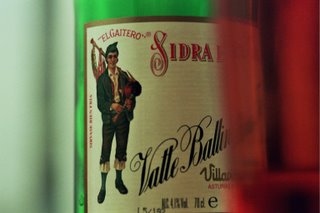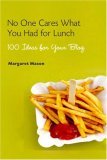La Bascula
 [A shabby-chic vegetarian-friendly co-op restaurant]
[A shabby-chic vegetarian-friendly co-op restaurant]At any given time, La Bascula seems like the place I'd go for a meal or a tea. Even though I order almost the same thing everytime, I don't get sick of it. From the outside, it didn't even resemble a restaurant, but a cool anti-establishment art exhibition space. It bears huge bar tables recycled from doors. This is the waiting area-cum-bar for those crowded weekend nights. You can watch the co-op members labor over their organic food creations through the big kitchen while waiting with a beer and salivating at the empanadas displayed at the counter. Behind the counter, another huge and colorful dining area awaits you. The bohemian-feel decor brings out the cozyness and goodness of homemade fusion food using natural ingredients.
Even Lionel keeps nodding in agreement how everytime the meal never fail to satisfy us to the brim. Well, it is his favorite restaurant, and I can see why that is so. This gem of Barcelona eateries is the fruition of a group of cooking friends who drafted up the concept of a co-operative kitchen. I don't know exactly how their model is based on, but I know it involves everyone taking a part in either the kitchen or the dining area.
Their recipes are inspired by their Latin American roots (Argentinian to be exact, but not forgetting the heavy Italian influence there). The vegetarian-friendly menu (90 percent vegetarian) consists of manually elaborated Italian filled pasta, French savory crepes, Chiliean vegetable soups, Argentinian empanadas, and even the Columbian arepas. The empanadas and filled pasta are their specialty and they always come in an assortment of flavors. Sometimes I hop in for tea or merienda. It's a great location to catch up with a friend over a cup of their special teas or mate, with a slice of their confections. There's a glass display at the entrance to the dining area filled with the cakes and tartes of the day.
The portions are a true value-for-dough. Even if you order a slice of savoury tarte, it comes in a generous portion, with a beautifully assembled salad. Last night, i had a tortellini de canela, rellenos de calabaza, pistachio, y queso fresco con salsa de pesto (homemade tortellini with cinnamon, filled with pumpkin, pistachio, and a fresh curd-like spanish cheese, dressed with a generous ladle of pesto sauce.) Lionel had a gnolotti de curcuma, rellenos de ciruela, espinacas, y queso de cabra con salsa de nuez (filled pasta made of turmeric powder, stuffed with a mixture of prunes, spinach, and goat cheese, and dressed with a walnut sauce.) You can have white wine by the glass, and a flan de dulce de leche for dessert, and the bill for two should come under 30 euro.
A far cry from those over-priced fancy restaurants that come out from a guidebook or tourist-geared booklet printed in ENGLISH, La Bascula is where you can mingle and blend in with the average Spanish crowd over a wholesome meal shared with friends. For dinner, it's a deal, but make sure you go right before nine to beat the crowd. (Remember 21h or 9 p.m. is the normal dinner time for Spaniards.) If you can't wait, you can have a small tapas or a cheese sampling elsewhere in the Barrio Gotico at five!
IN THE KNOW:
La Bascula
C/ Flassaders 30 | Tel. 93 319 9866 | Open Mon-Sat 1-11.30pm
Metro « Jaume I »
(Restaurant is located one parallel street away from where the Picasso Musuem is situated)
Prices: Empanadas 2 euros. Most dishes ~6-7 euros. Desserts ~3 euros.
Etiquetas: Barcelona





 La Fromagerie
La Fromagerie



















